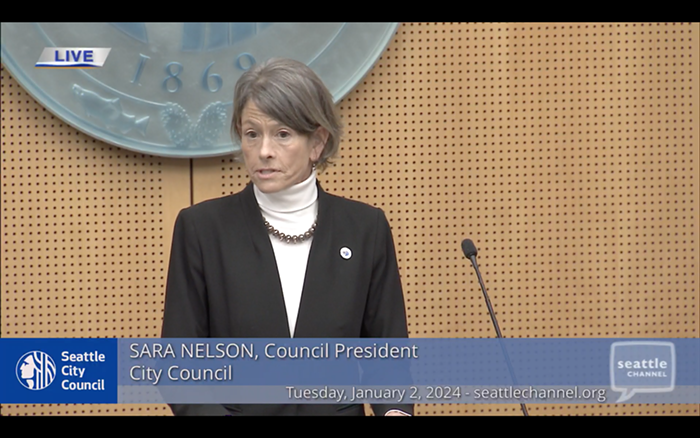
It's only been three weeks since a repaired Bertha started excavating in downtown Seattle again, and the project's already had a problem with a barge drifting away and tipping dirt into Elliott Bay. Workers temporarily halted the tunnel project to sort out the barge issue, but just two hours after they started drilling again last night, a sinkhole opened up just 12 yards from Bertha's rescue pit.
This is a worrying development, considering that it happened in the stretch of the tunnel before the machine goes under the viaduct. What if a future sinkhole opens up above Bertha while the drilling machine is underneath the viaduct?
From the Washington State Department of Everything Is Fine, No, Really, Trust Us:
Approximately two hours [after Bertha started drilling again], a sinkhole developed within STP’s work zone near South Main Street, about 35 feet north of the access pit. It is located more than 100 feet south of the cutterhead's current location, in ground that crews mined through last week. STP filled the sinkhole overnight with 250 cubic yards of concrete.
This section of the tunnel drive is protected by an underground wall built by STP before tunneling. The wall was designed to isolate ground movement and protect the nearby Alaskan Way Viaduct. A manual survey of the viaduct conducted after the sinkhole developed found no movement. WSDOT and STP will continue surveying and monitoring the ground, viaduct, utilities and other structures.
The cause of the sinkhole is still under investigation. STP is analyzing the portion of the tunnel that crews have excavated since mining resumed. There is no indication that any other locations have experienced ground loss.
STP is reviewing their daily operations as a result of this incident. Immediately they will enhance monitoring protocols by requiring crews to manually verify the amount of soil removed during excavation of each ring.
WSDOT also noted that they were "disappointed" STP did not use protocols that would have enhanced monitoring when the machine restarted tunneling last month. That's about the most strongly worded condemnation of STP you'll get from a WSDOT update; the agency also noted that STP's protocols will "undergo an additional review by an expert to assure public safety."
STP plans to restart tunneling this week and use trucks to get rid of excavated dirt, according to WSDOT.
But what were the protocols that STP allegedly did not follow when they restarted tunneling? We haven't yet heard back from WSDOT, but we'll update when we do.
UPDATE: We found out what "enhance monitoring protocols" means. For every ring tunneled, STP has to remove a certain amount of dirt. Their instrumentation tells them how much dirt is theoretically being removed. In this case, more dirt was leaving the tunnel than the instrumentation reported.
The amount of dirt missing from the sinkhole is the same amount of dirt that made up the difference between what the instrumentation told the engineers and what was actually excavated. Chris Dixon of STP says that this means engineers must "rectify the data."
Before STP picked up tunneling for a second time, they used monitoring protocols that included some amount of manual measurement. When they restarted tunneling, they did not. This is what WSDOT meant when the agency said it was "disappointed"—it was disappointed that STP hadn't re-tuned its monitoring protocols when it picked up drilling again.


















